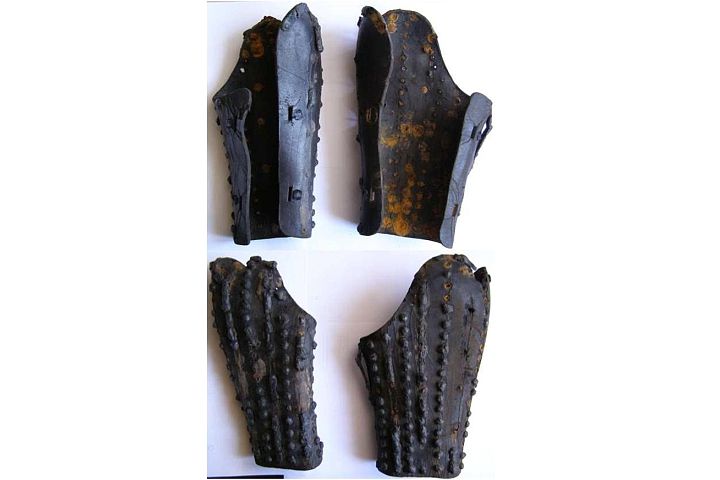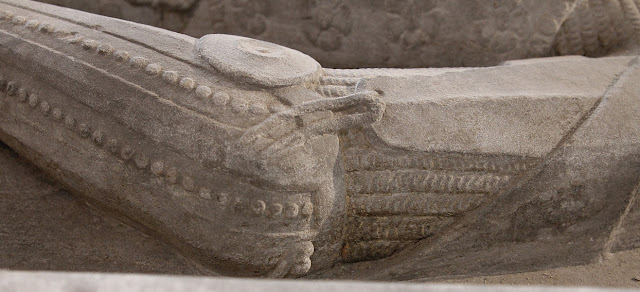| Author |
Message |
|
John Bishop
Location: Johnson City, TN Joined: 11 Apr 2012
Posts: 1
|
 Posted: Wed 11 Apr, 2012 6:15 pm Post subject: Studded Armors Posted: Wed 11 Apr, 2012 6:15 pm Post subject: Studded Armors |
 |
|
I have some questions about studded armor.
1. Did studded armors exist before 1800? If so, where and when?
2. How did the studded armor compare to non-studded armor in means of protection and usefulness?
3. If it did provide added protection, then why did it?
|
|
  |
 |
|
Timo Nieminen
|
 Posted: Wed 11 Apr, 2012 8:01 pm Post subject: Re: Studded Armors Posted: Wed 11 Apr, 2012 8:01 pm Post subject: Re: Studded Armors |
 |
|
| John Bishop wrote: | I have some questions about studded armor.
1. Did studded armors exist before 1800? If so, where and when?
2. How did the studded armor compare to non-studded armor in means of protection and usefulness?
3. If it did provide added protection, then why did it? |
There are two kinds of real studded armour. The first is brigandine. In brigandines where the plates are riveted to the cloth/leather, all that's visible are the rivet heads. This kind of armour was used in Europe, India, Korea, and China. The "studs" (i.e., rivet heads) don't provide any protection; the plates provide the protection. These tend to be later armours, late Medieval and later, being used into the 19th century in India and China. Some artwork showing brigandines has been incorrectly interpreted as "studded", with the writer assuming that the "studs" are the protective element. Also, these armours were often called "nail armour" or similar, at the time (especially in India and China).
The other type of studded armour is imitation brigandine. Basically, brigandine without the plates, with only the rivets. Often, this is only imitation armour, for courtiers who want a martial appearance without the weight of real armour. However, there are some Indian examples where the armour has enough layers of cloth to function as effective armour. In this case, the rivets/studs could be purely decorative, or they could help hold the layers of cloth together.
There's much more on studded armour in this thread.
"In addition to being efficient, all pole arms were quite nice to look at." - Cherney Berg, A hideous history of weapons, Collier 1963.
|
|
   |
 |
T. Arndt

|
 Posted: Thu 12 Apr, 2012 11:26 am Post subject: Posted: Thu 12 Apr, 2012 11:26 am Post subject: |
 |
|
To expand on what Timo said, a coat of plates, which is earlier than brigandine might also appear to be "studded" armor to the uninitiated. But like the brigandine the rivets are attached to plates (the plates being larger in the case of the coat of plates). However, my understanding is that historically a coat of plates would have often been covered by a jupon.
Wisconsin Historical Fencing Association (WHFA) - La Crosse
A HEMA Alliance Affiliate
“Quis custodiet ipsos custodes?” -Juvenal
|
|
   |
 |
Joshua McGee

|
|
  |
 |
|
Jojo Zerach
|
 Posted: Thu 12 Apr, 2012 10:12 pm Post subject: Posted: Thu 12 Apr, 2012 10:12 pm Post subject: |
 |
|
Effigies like those posted above are probably the origin of the studded armour idea. While they could be depicting some sort of studded armour, its more likely they're showing rivet heads of splinted armour under a layer of leather or cloth.
I'm not sure we have any evidence for armour simply relying on studs for protection.
|
|
  |
 |
Joshua McGee

|
 Posted: Thu 12 Apr, 2012 10:19 pm Post subject: Posted: Thu 12 Apr, 2012 10:19 pm Post subject: |
 |
|
| Jojo Zerach wrote: | Effigies like those posted above are probably the origin of the studded armour idea. While they could be depicting some sort of studded armour, its more likely they're showing rivet heads of splinted armour under a layer of leather or cloth.
I'm not sure we have any evidence for armour simply relying on studs for protection. |
Yep, pretty much. It's a Victorian-era mistake perpetuated by Ashdown et al.
|
|
  |
 |
Mackenzie Cosens

Location: Vancouver Canada Joined: 08 Aug 2007
Posts: 238
|
 Posted: Fri 13 Apr, 2012 1:27 pm Post subject: Posted: Fri 13 Apr, 2012 1:27 pm Post subject: |
 |
|
There is a possibility that this type of armour is a kind of splint with stud decoration. Although it is likely that the studs indicate a plate on the inside of the armour.
 Attachment: 33.09 KB Attachment: 33.09 KB

 Attachment: 57.27 KB Attachment: 57.27 KB

|
|
  |
 |
|
|

